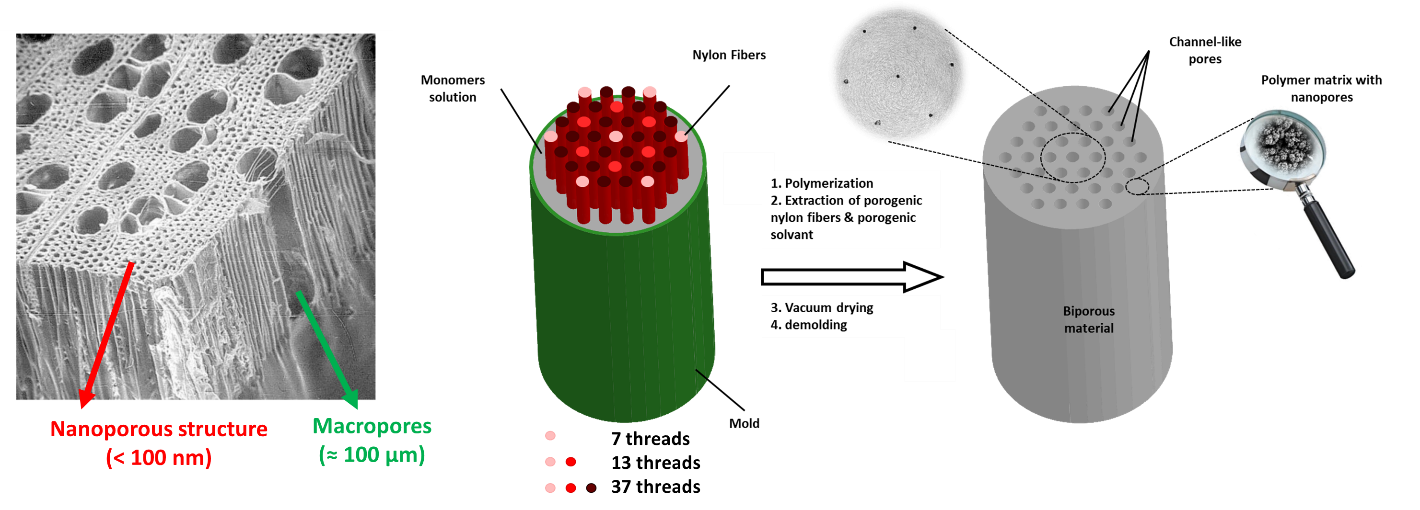Design and Multi-scale Investigation of Biporous Bioinspired Polymeric Materials
PhD, 36 months, AAP 2017-1
Team: Equipes Polymères, ICMPE
Project leader : Daniel Grande
Abstract:
Wood possesses remarkable thermal and mechanical properties that make it a material of construction of choice. However, this material is hygroscopic and the question of the transfers of water in wood is crucial for the control of its use in the area of construction, in particular when the used essence does not present a sufficient natural durability. The exposure in an excessive humidity can favor the fungal attacks which can lead to an alteration of the mechanical properties, or even to the destruction of wood. Besides, its properties (thermal, mechanical) are sensitive to climatic variations (in particular the relative humidity), which can induce losses of performance or the disorders in the case of prevented deformations in structures of civil engineering or buildings. Finally, the capacity of wood for drawing off humidity has also positive effects, because it contributes to the comfort of the occupant of a house by regulating its rate of humidity.
However, water transfers are still badly apprehended, either because they are reproduced by models which do not permit to take into account correctly the physics of the phenomena involved, or because the description of mechanisms at various length scales is incomplete. In broad outline, internal structure of wood is characterized by channels of different sizes (in length and diameter) oriented along the direction of maximum anisotropy (trunk direction) and connected between them by pits which allow for transfers in the cross-sectional plan (according to the directions of radial and tangential anisotropy). Channels present different geometries depending on essences (hardwood, softwood, and conditions of tree growth. In wood, water takes three forms: free water, vapor, and water bound to cell walls which is responsible for the dimension variations of wood material.
In this context, we propose to engineer model anisotropic biporous materials that mimick the essential elements of wood structure and its morphology, relying on the association of macroporous longitudinal channels (scale of about tens or hundreds of microns) and of nanoporous phases (scale of about ten to hundred nanometers). We aim to elaborate two types of porous structures, one representing a typical hardwood, and another one of a typical softwood, and we shall study their transfer properties (imbibition-drying) in order to reach the original properties of wood. The work will lean back against the equipments of the involved teams (D. Grande, B. Le Droumaguet, ICMPE (Thiais), P. Coussot, S Caré, O. Pitois, NAVIER (Champs-sur-Marne): SEM, mercury intrusion porosimetry, X-ray microtomography, NMR, MRI, etc.

Axes :
Collaborations :